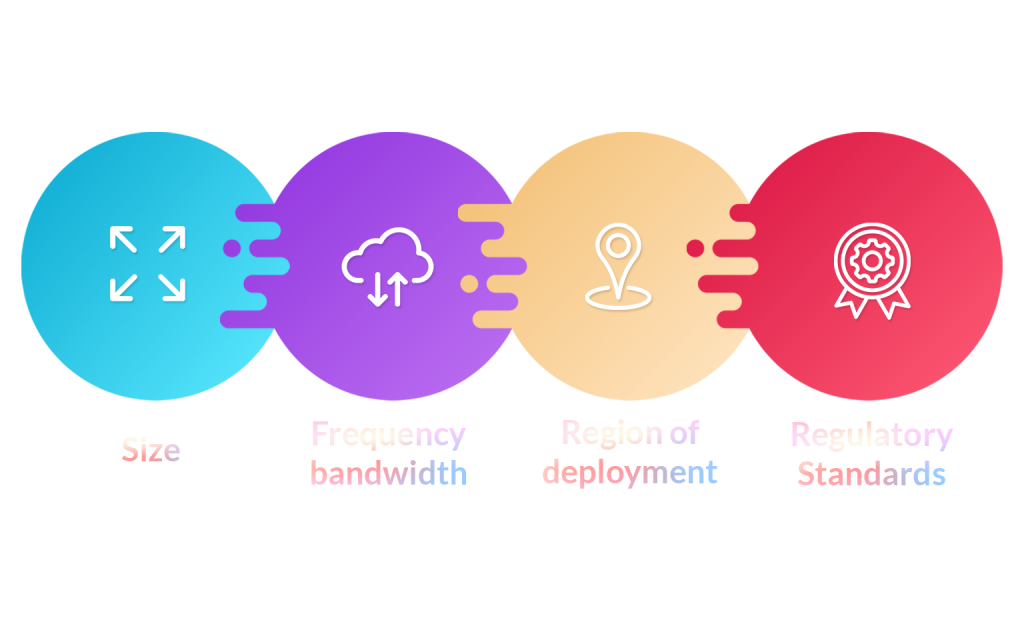According to Matt McWhinny, the business development manager at Molex, “ Antennas for IoT device is almost like an airport runway. The signal is on the board, and when it hits the antenna, it is sent into the air (space).”
Designers and IoT manufacturers have multiple choices when selecting the Antenna for their product. Unfortunately, lack of knowledge lands IoT manufacturers in a pitfall. On the other hand, the antenna stock has risen due to internet of things advancements and integrity. Due to this progress, IoT platforms have initiated to deploy seamlessly in-size antennas while incorporating advanced wireless technology.
It is obvious that multiple products require machine-to-machine connectivity and high-frequency bandwidth. For this, there is a wide variety of embedded antennas for every device and network. This article discusses those antennas and factors influencing the choice of the antenna for your IoT device.
Types of IoT Antennas

The Internet of things(IoT) is widely accepted as a collective bridge that connects the real world to the virtual world. The technology has skyrocketed in the last few years since its launch. To drive such impactful technology into the world, various machine-to-machine ( M2M) communication via Bluetooth, Zigbee, WLAN, and UWB, are becoming the pillar of communication to drive IoT adoption in the world. Here, we will highlight the different types of Antennas that help facilitate the communication gap between two IoT-encouraged devices in the modern world.
Surface Mount device antennas
Surface Mount Device Antennas require colossal space to resonate the low frequencies below the surface adjacent to it. Recently SMD antennas got a lot of appreciation and are set to be one of the best types for small devices.
Generally, SMD antennas are soldered onto the PCB. There are noise-free, lightweight, and easily integrated using pick and place machinery. Now the cherry on the cake comes when their small size is helpful for designers to put them over a PCB and utilize space for other components. These antennas are also subjectable to carry multiple frequencies in solid and embedded forms.
Moreover, using SMD antennas reduces the board cost, handling costs and controls manufacturing processes. But, as every coin has two sides, they also require a large clearance area, space requirement, and, at low frequencies, a plane compound to resonate correctly, as mentioned earlier. For this, designers must consider covering these points while integrating the PCB with antennas.
Chip Antennas
Chip antennas are majorly known for their small footprint. Therefore, the hype is because they help make the circuit board radiate high-frequency electromagnetic waves. However, they work under a limited range, hence beneficial for small devices and connectors.
The significant advantage of a chip antenna is the infusion of a dielectric chip with a high permittivity constant. The high permittivity reduces the size of the antenna for the same wavelength. In fact, due to the high frequency, the metal structures become lossy, but this does not happen with the chip antennas as the dielectric resonators do not suffer from these issues. That is why chip antennas are used in high-frequency devices and routers.
3D Printed Antennas
A plastic 3D carrier or mold can be used to build and produce these antennas thanks to cutting-edge engineering methods like Laser Direct Structuring (LDS). Engineers can adjust and fine-tune the antenna to their client’s specifications during the prototype stage, thanks to the 3D design. The client can also anticipate speedy methods and turnaround times. When space is at a premium, these antennas are a fantastic choice.
Additionally, SMT compatibility and a low failure rate of 3D printer antennas enable continuous mass production. As a result, different frequencies can be included in the mold without changing the antenna traces or the plastic molding. Because 3D printed antennas are individualized goods, finding specific colors and materials might be challenging.
Factors influencing the selection of the Antenna for IoT applications

While designing the IoT device, there are several factors influencing the selection of an antenna. A few are size, frequency bandwidth, range, region of deployment, etc. Now, talking about the frequency bands, they fall under the unlicensed spectrum of ISM bands (Industrial, medical, scientific). Therefore, every antenna cannot provide a different frequency range which is why they are designed for specific applications and bandwidth.
For example, WIFI or Bluetooth seems to be a good option only for portable devices, gaming gadgets, and IP cameras. However, for industry 4.0, smart cities, agriculture networks, LPWAN, and NB-IoT must work effectively. Sometimes, the antenna’s topology matters more than its size. The topology influences the antenna’s bandwidth, radiation pattern, gain, and overall efficiency.
You might be clashing between a standard off-shelf antenna or a customized one. Here’s a twist, the off-the-shelf antennas meet the product performance and fall under the cost-effective solution. However, while designing the product, the designer might face challenges deploying these antennas in a highly tight design. Custom design antennas are the solution to the problem.
Apart from this, before selecting the antenna, developers must check the regulatory standards like the Radio Equipment Directive(RED), Electromagnetic compliance, etc.





